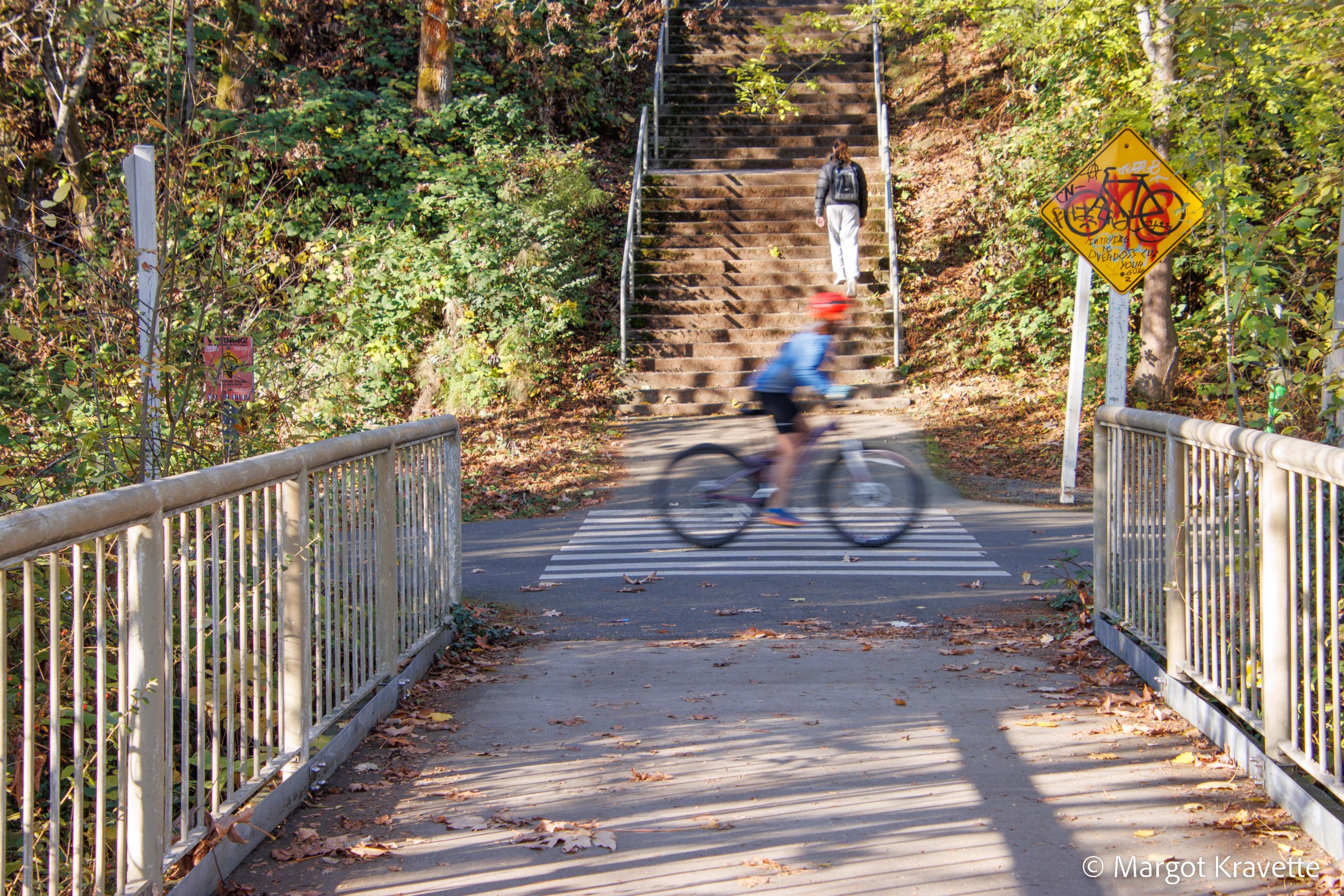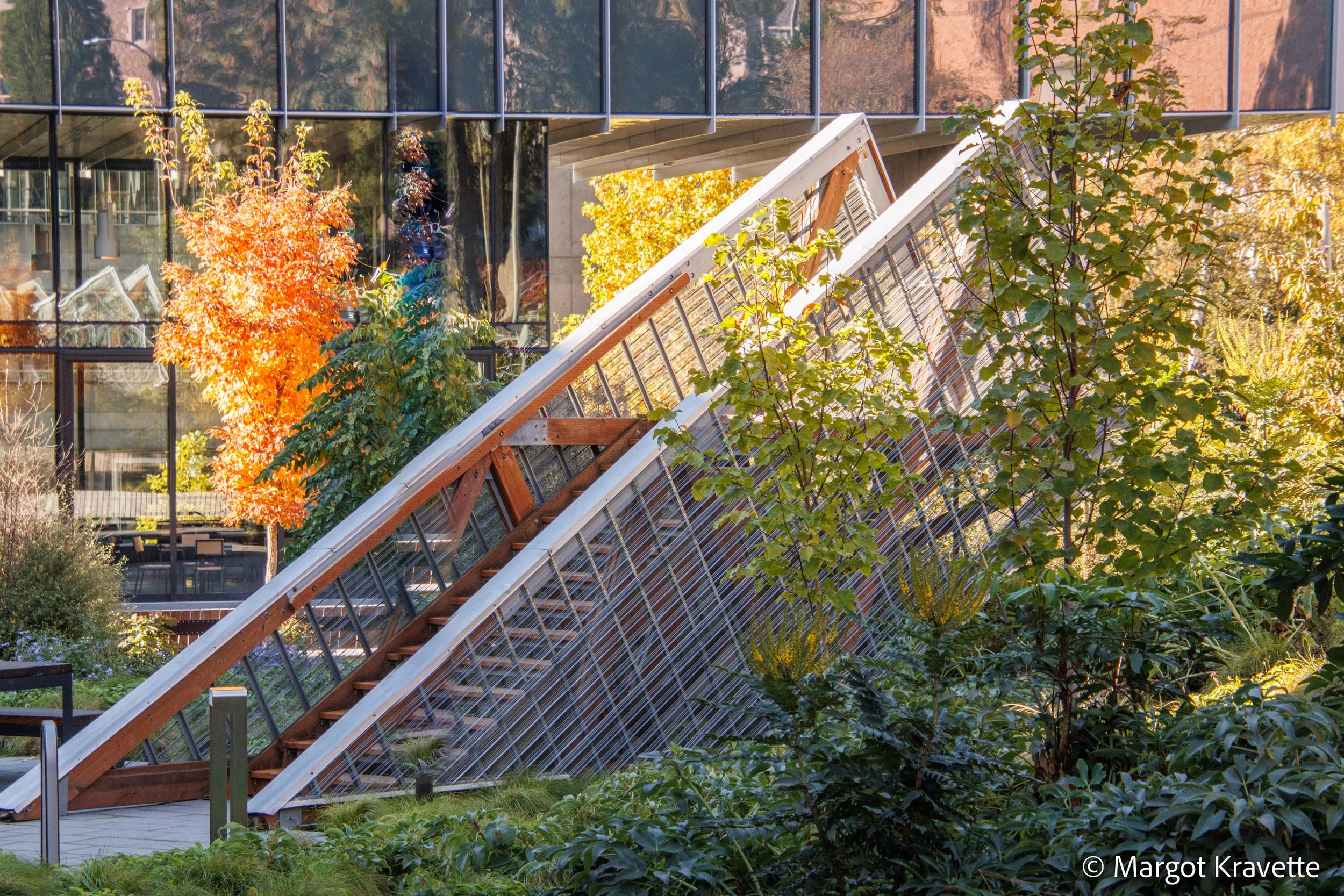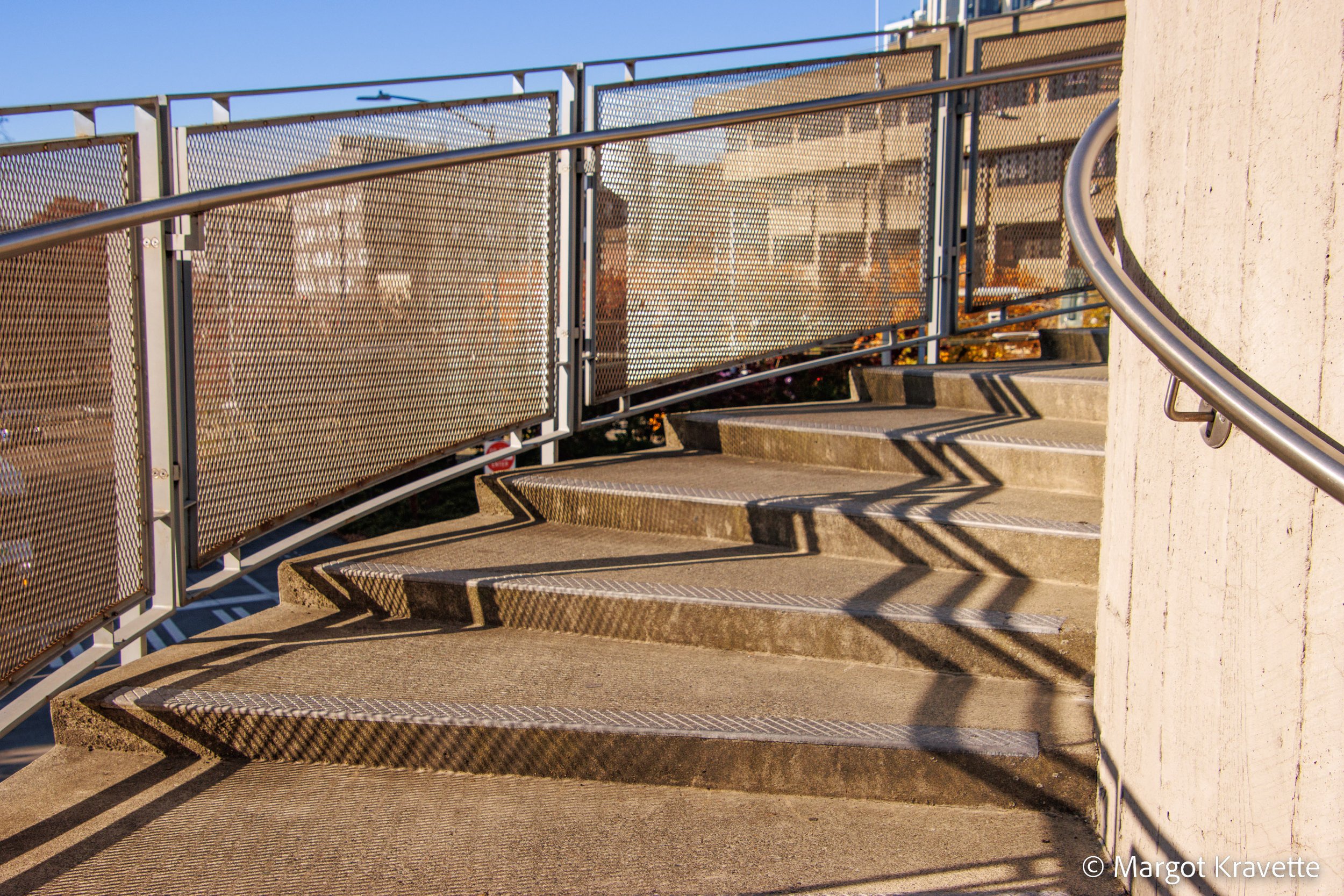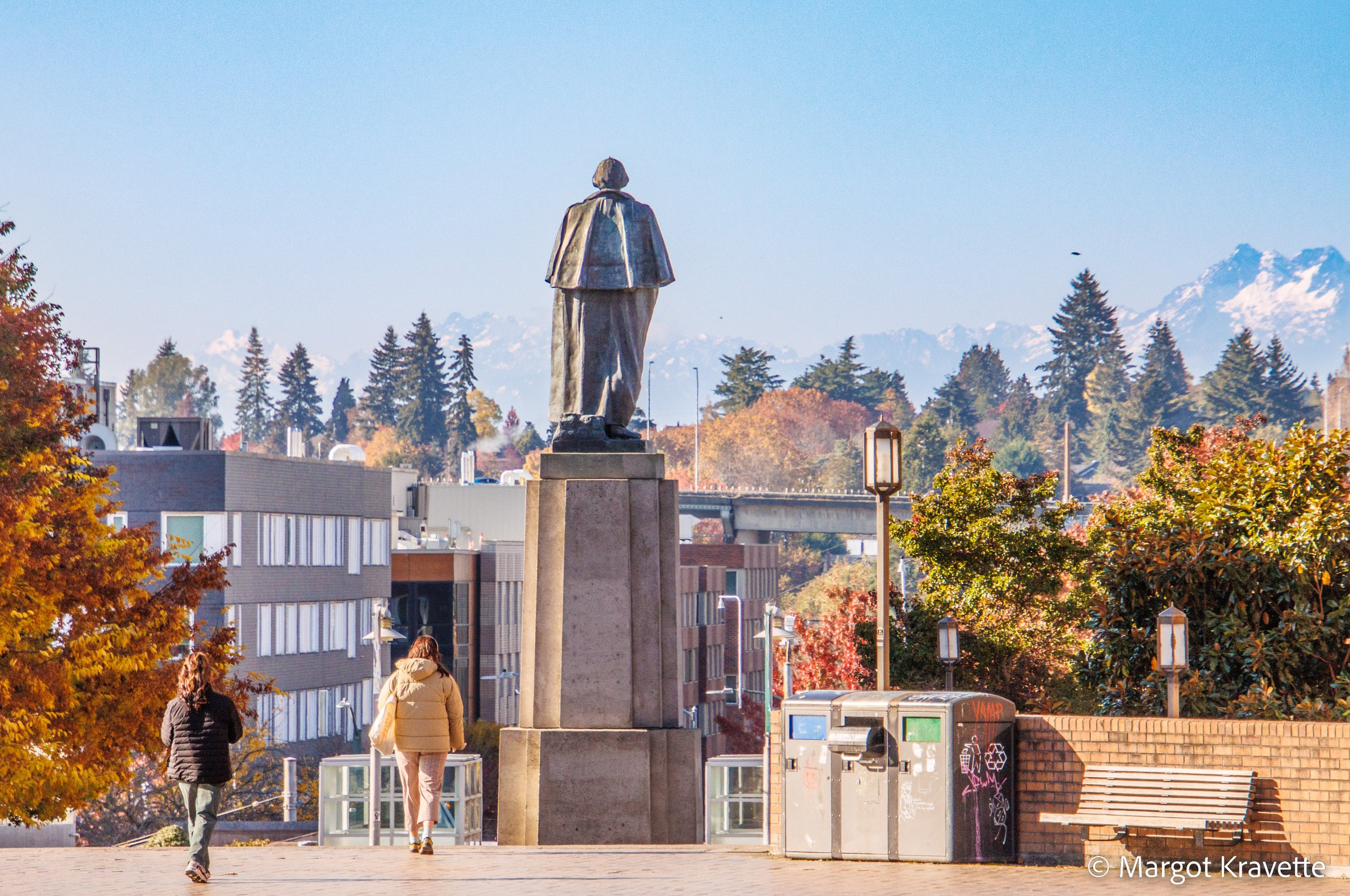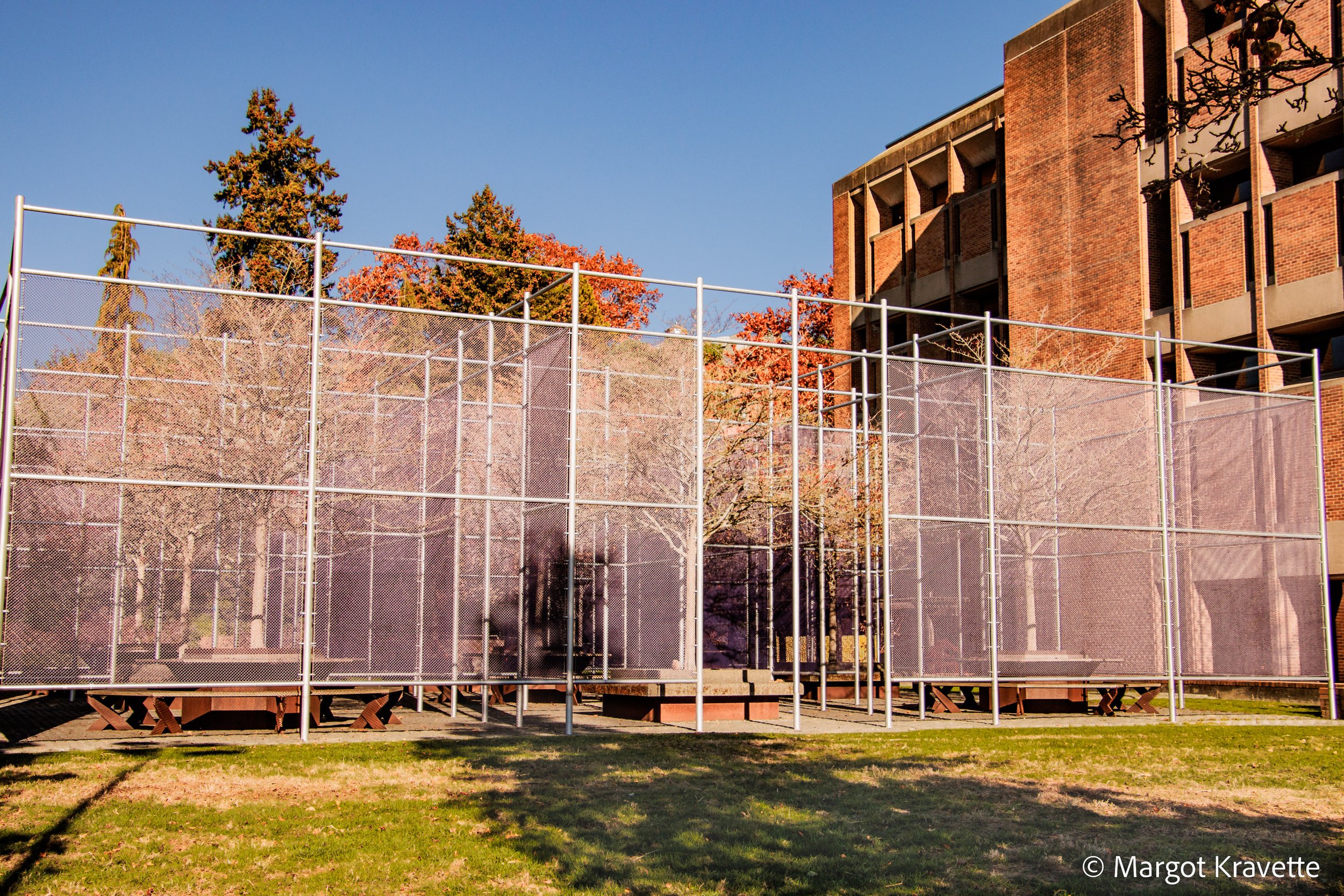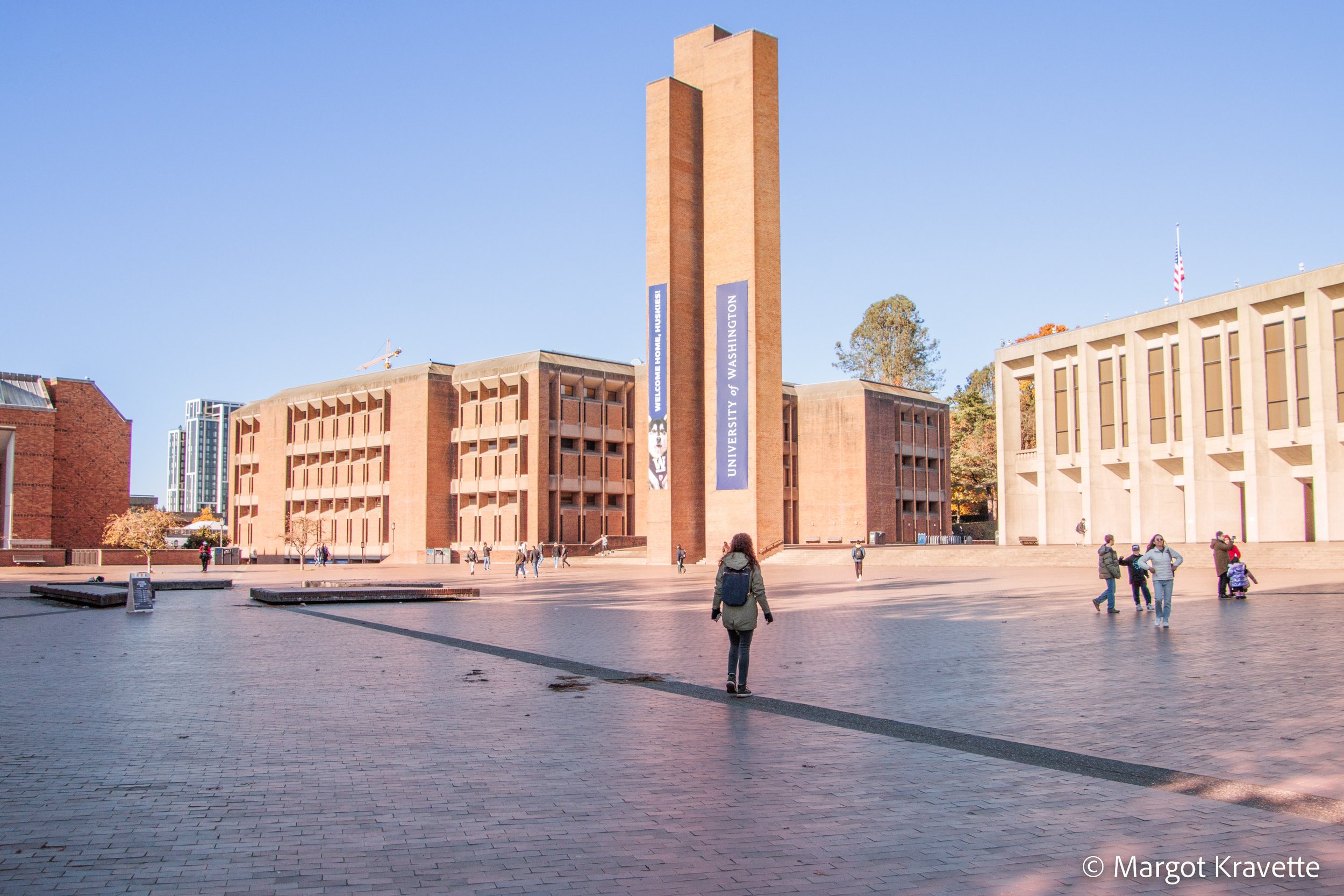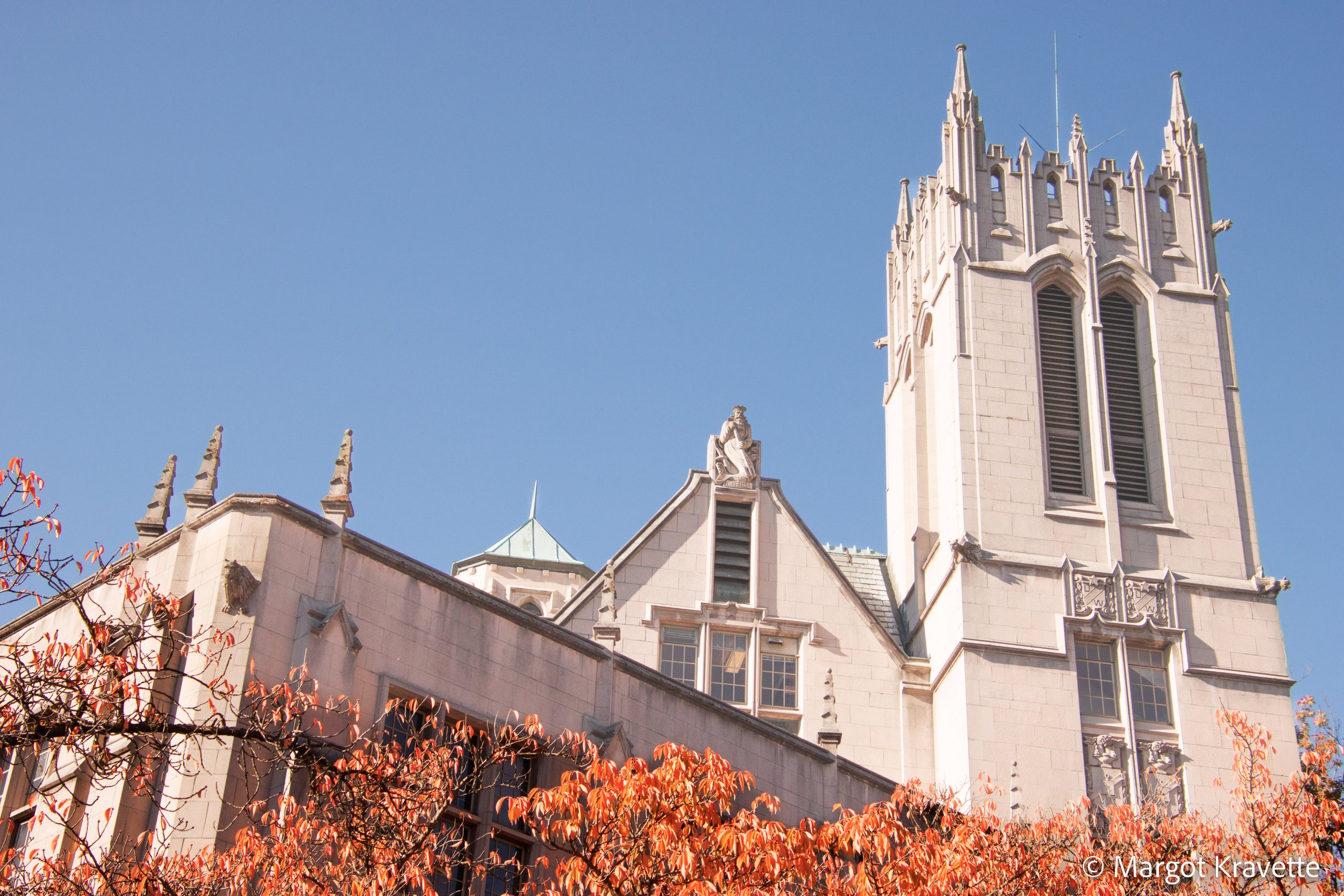University of Washington Staircase Walk
With the University of Washington (UW) right in my backyard I rarely think about it as a place to journey to other than to see the cherry blossoms in the spring. But this last summer I began taking walks listed in the book Seattle Stairway Walks: An Up-and-Down Guide to City Neighborhoods, and there was a walk through the UW campus. And because these walks were with friends, I did not take my camera, which would have added significant time. In addition to the many steps (325 up and 273 down), the walk directed us to both familiar places and hidden gems. I knew I needed to come back to photograph it, which is what I did on a recent crisp, sunny fall day.
The stairs started, leading me from the E-1 parking lot to a bridge over Montlake Boulevard, across the Burke Gilman trail and into the campus. I couldn’t help stopping to watch walkers, runners and cyclists pass me on the trail.
As I made it to the top of the Wahkiakum Lane stairs, I reached Stevens Way, the main drag that weaves through the campus. As late as it was in mid-November, I was surprised that the trees were so colorful in their bright yellow, orange and red. Everywhere I saw these gorgeous colors both on the trees themselves and reflected in the glass of many of the buildings. Never having walked around the campus I was impressed with the way newer constructions, such as the Paul G. Allen School for Computer Science and Engineering, is incorporated with older buildings such as Roberts Hall (1921), the School of Mines, offering amazing reflections in their windows.
Just passing a delivery driveway for the Paul Allen Center onto a small pathway, I thought I was entering the Emerald City. There in front of me was the Sylvan Theater, an area of serenity. Hidden by a circle of trees, stairs on each side lead up the amphitheater to the stage. The entire area was covered with grass, with four white Ionic columns on the stage and several benches placed strategically far away from each other to ensure solitude for its visitors. The hand-carved cedar columns previously supported the portico of the original university building on University Street. in downtown Seattle.
Back to Stevens Way and up another pathway I found the Rainier Vista to the southeast. I had many times walked or biked on the Rainier Vista from the Burke Gillman trail to the Lite Rail. Turning north from the pathway instead, I reached Drumheller Fountain which was quiet, having only reflections and a few ducks in the water. The broad, spectacular view from the fountain of the Vista and Mount Rainier in the background, was part of the plan designed by the Olmsted Brothers for the 1909 Alaska-Yukon-Pacific Exposition on the UW campus. In that year the fountain was called Geyser Basin, and following the exposition, the pond itself remained, the fountain expanded, and it was used in part for log rolling contests put on by the College of Forestry.
This staircase walk took me to a most unusual one, the Stairs to NoWhere. This staircase, with its 13 steps, literally goes nowhere and it is not available for people to actually climb. It was built as a project by a group of students in the College of Architecture. The trusses were made in the school’s shop and the framing was done on site. It is quite whimsical, even sitting among some very attractive foliage.
The next staircase was the Spiral Stairs leading from street level on 15th Avenue NE up to the plaza that leads to the entrance of the Henry Art Gallery. There are 53 stairs in this cylindrical structure, and with the way it was designed, it has some very interesting shadows when the sun is pointing from the west.
As I continued my tour I couldn’t miss the statue of George Washington that had been installed close to its current location in 1909, also as part of the exposition described above. Looking at it from behind, I saw that Mr. Washington had a beautiful view of the snow-covered Olympic mountains. Looking to the left of the fountain I saw what I thought was an enclosed area that perhaps were tennis or pickle ball courts. But as I got closer I realized that this was a collection of nine grids, each distinct from the others, and each containing a large planter with a tree. The piece, called 9 Spaces 9 Trees, was originally commissioned in 1980 to be placed on top of a building somewhere else on campus, but it was reimagined and and placed in its current location in 2007.
The next set of 20 stairs brought me to Red Square with the magnificent Tudor Collegiate Gothic Suzzallo Library straight ahead of me. During the Exposition the square was the site of the U.S. Government Building which was removed after the event and left as an open field known as the Suzzallo Quadrangle. In 1969 the field was excavated to build the underground parking garage, and it was decided not to place grass over it because of the concern about water leakage into the garage. Rather the covering of the garage was built with red bricks; hence, the name Red Square. Other buildings surrounding the Square are the Odegaard Undergraduate Library, Meany Hall, Gerberding Hall with its tower and spires, and Kane Hall with its bells. The Broken Obelisk, by artist Barnett Newman sits between Kane Hall and the Suzzallo Library.
Up two sets of three steps from Red Square, is the most well known location on campus to non-students - the Quad, otherwise known as the Liberal Arts Quadrangle. With the vibrant Yoshino cherry trees that bloom in the spring, I felt compelled to capture them in this different season.
Taking this staircase walk gave me a chance to wander through the campus to places I’d never seen or noticed before, and I knew I had to return to capture their beauty. The final stop was at Denny Hall, the first construction once the university moved to its current location from downtown Seattle. The gorgeous building was constructed in 1895 in the French Renaissance style, and is the most photographed building on campus. There is interesting history. about the building. Although it is still known by some as the administrative building which is how it was used during its first 20 years with its offices, the first library and a 736 seat auditorium, it has changed its usage and its internal form many times. It sits on a gentle hilltop with park-like grass and trees, inviting visitors to stop and stay awhile.
For me, Denny Hall was like the cherry on top of a wonderful afternoon.



